|
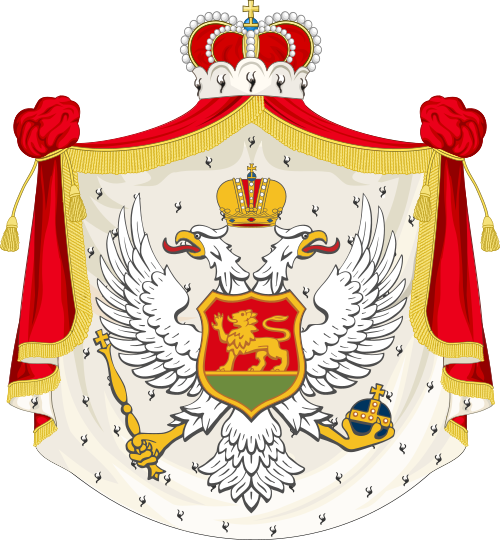
Kingdom of Montenegro Kraljevina Crna Gora The Kingdom of Montenegro (Serbian: Краљевина
Црнa Горa, Kraljevina Crna Gora) was a monarchy in southeastern Europe during the tumultuous
years on the Balkan Peninsula leading up to and during World War I. Legally it was a constitutional monarchy, but absolutist
in practice. On November 26, 1918 Montenegro was incorporated into the Kingdom of Serbs, Croats and Slovenes following the
country's annexation by the Kingdom of Serbia.The Kingdom of Montenegro was proclaimed by Nicholas I in Cetinje, on 28 August
1910. Nicholas I, which had ruled the country as Prince since 1860, initiated several modernizing reforms in the beginning
of the 20th century such as introducing a constitution and a new currency, the Montenegrin perper. 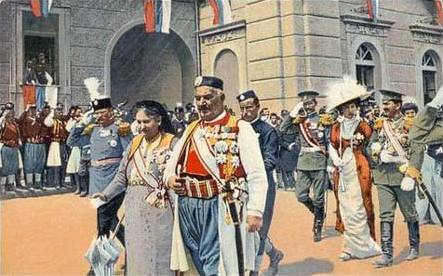
Montenegro enthustiastically
joined the First Balkan War in 1912, hoping to get a share in the last Ottoman-controlled areas of Rumelia. At first, Montenegro
did make further territorial gains by splitting Sandžak with Serbia on 30 May 1913. Later though, the newly-captured
city of İşkodra (Skadar in Montenegrin, now Shkodër) had to be given up to the new state of Albania at the
insistence of the Great Powers despite the Montenegrins having invested 10,000 lives into the capture of the town from the
Ottoman-Albanian forces of Esad Pasha. When, in 1913 after the war, conflict broke out between Bulgaria and Serbia, it was
natural for King Nicholas to side with Serbia and once again Montenegro was tossed into war, in which Montenegro indeed was
granted substantial additional territory. During the Great
War, Montenegro was allied with the Triple Entente, in line with King Nicholas' pro-Serbian policy. From 15 January 1916 to
October 1918, the country was occupied by Austria-Hungary. On 20 July 1917, the Corfu Declaration was signed; it declared
the unification of Montenegro with Serbia. On 26 November 1918, Montenegrin unification with Serbia was proclaimed. Nicholas
I was a staunch supporter of unification with Serbia to form a great Serbian state for all Serbs but was in conflict with
the kings of Serbia concerning who would be the ruler of the new kingdom. Nicholas I was eventually dethroned and exiled. 
Nominally, a later Kingdom
of Montenegro existed during World War II. In reality, the area was under Italian and then German control, and there was no
monarch, with all candidates having refused the crown. Italian-appointed governors ruled this puppet state from 1941 through
1943, and when Italy withdrew, the region came under direct control by German troops. Yugoslav Partisans under Josip Broz
Tito took control in December 1944, terminating the ostensible second Kingdom of Montenegro. 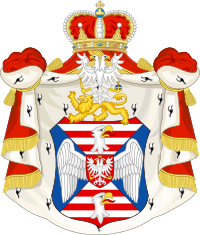
House
of Petrović-Njegoš The
House of Petrović-Njegoš (Serbian Cyrillic: Петровић-Његош)
was the reigning family of Montenegro from 1696 to 1918. Montenegro had enjoyed de facto independence from the Ottoman Empire
from 1711 but only received formal international recognition as an independent principality in 1878. Montenegro was ruled
from inception by Vladikas, Prince-Bishops, who had a dual temporal and spiritual role. In 1852 this role was amended to be
a purely temporal office. In 1910 the ruling prince Nikola I announced his elevation to King. In 1916 King Nikola I was ousted
by the invasion and occupation of his country by Austria-Hungary that was followed by his formal deposition by the Podgorica
Assembly in 1918 as Montenegro was annexed by the emergent Kingdom of Serbs, Croats and Slovenes. 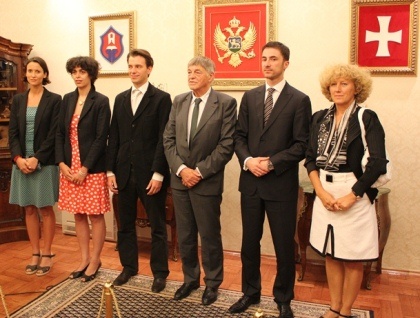
A period of eighty years of control
from Belgrade followed during which Nikola I died in exile in France in 1921 followed shorty afterwards by the surprise abdication
of his son and heir, Danilo III, the same year. The latter's nephew, Michael Petrović-Njegoš, inherited the titles
of his predecessors whilst in exile in France and survived arrest and internment by order of Adolf Hitler for refusing to
head up a puppet Montenegrin state aligned to the Axis Powers. Later, he served the Yugoslav Communist regime as Head of Protocol.
He was succeeded by his son Nicholas Petrović-Njegoš in 1986. Nicholas returned to Montenegro to support the Montenegrin
independence movement that went on to achieve full sovereignty for the Republic of Montenegro in 2006 referendum. The present
head of the house is Nicholas II of Montenegro. 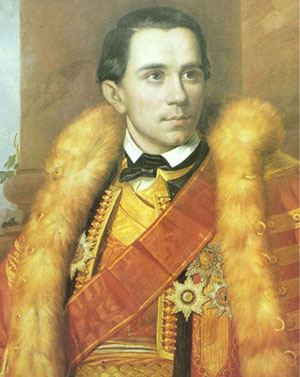
The List of Princes and Kings
of Montenegro - 1696 - 1918 Prince-Bishops from the House of Petrović-Njegoš
| Picture |
Name
Born - Died | Reign | Territory |
Notes |  | Prince-Bishop
Danilo
I
1670 - January 11, 1735 | July
1696 - January 22, 1735 | Prince-Bishopric
of Montenegro | Founder of the House
of Petrović-Njegoš. |  | Prince-Bishop
Sava
II
January 18, 1702 - March 9, 1782 | January 22, 1735 - March 9, 1782 | Prince-Bishopric
of Montenegro | Ruled jointly with Vasilije
III from 1750 until March 10, 1766. |  | Prince-Bishop
Vasilije
III
1709 - March 10, 1766 | 1750
- March 10, 1766 | Prince-Bishopric
of Montenegro | Ruled jointly with Sava
II. |  | Prince-Bishop
Petar
I
1747 - October 30, 1830 | March
1782 - October 30, 1830 | Prince-Bishopric
of Montenegro | Canonized as Saint Peter
of Cetinje by the Serbian Orthodox Church. | | | Prince-Bishop
Petar II
November 13, 1813 - October
31, 1851 | October 30, 1830 - October
31, 1851 | Prince-Bishopric of Montenegro |
Most famous as a poet. His notable works include The
Mountain Wreath, The Light of Microcosm, The Serbian Mirror and False Tsar Stephen the Little. |
 | Prince-Bishop
Danilo
II
May 25, 1826 - August 13, 1860 | 1851 - March 13, 1852 | Prince-Bishopric
of Montenegro | Proclaimed Prince of
Montenegro | 
Principality of Montenegro
- House of Petrović-Njegoš
| Picture |
TitleName
Born - Died |
Reign | Territory | Notes |
 | Prince
Danilo I
May 25, 1826 - August 13, 1860 | March
13, 1852 - August 13, 1860 | Principality
of Montenegro | First secular ruler
of Montenegro after centuries of theocratic rule. Assassinated in Kotor. |  | Prince
Nikola I
October 7, 1841 - March 1, 1921 | August
13, 1860 - August 28, 1910 | Principality
of Montenegro | Proclaimed King of Montenegro |
Kingdom of Montenegro - House of Petrović-Njegoš
| Picture | TitleName
Born - Died | Reign |
Territory | Notes |  | King
Nikola I
October 7, 1841 - March 1, 1921 | August
28, 1910 - November 26, 1918 | Kingdom
of Montenegro | In exile from January
15, 1916; Deposed on the Podgorica Assembly on November 26, 1918. |
 Pretenders to the Montenegrin
throne since 1918 House of Petrović-Njegoš
- Nikola I (26 November 1918 - 1 March 1921)
- Danilo III (1 March 1921 - 7 March 1921)
- Michael I (7 March 1921 - 24 March 1986)
- Nikola II (24 March 1986 - Present) (Nikola II is also the hereditary
Grand Master of the Order of Prince Danilo I; The Order of Saint Peter of Cetinje and the Order of the Golden Obilić).
Royal Family Titles and Styles The members of this family bear the title Prince or Princess Petrovich Njegosh of Montenegro,
together with the formal appellation of His or Her Royal Highness. The Genealogy of the Royal House NIKOLA I, Prince of Montenegro in succession to his uncle 13 Aug 1860,
assumed the title King of Montenegro 28 Aug 1910, forced into exile 13 Nov 1918 when Montenegro was annexed to the new Kingdom
of the Serbs, Croats and Slovenes (Yugoslavia); b.Njegosh 7 Oct 1841, d.Cap d'Antibes 1 Mar 1921; m.Cetinje 8 Nov 1860 Milena
Vukotic (Cevo 4 May 1847-Cap d'Antibes 16 Mar 1923) 1a) Zorka Ljubica (Cetinje 23 Dec
1864-Cetinje 28 Mar 1890); m.Cetinje 11 Aug 1883 Pr Peter Karageorgevich [later, Prince and King of Serbia and then King of
the Serbs, Croats and Slovenes] (Belgrade 11 Jul 1844-Belgrade 16 Aug 1921) 2a) Militza (Cetinje 26 Jul 1866-Alexandria,
Egypt 5 Sep 1951); m.Peterhof 7 Aug 1889 Peter, Grand Duke of Russia (St.Petersburg 22 Jan 1864-Cap d'Antibes 17 Jun 1931)
3a) Stana (Anastasia) (Cetinje 4 Jan 1868-Cap
d'Antibes 15 Nov 1935); m.1st Peterhof 28 Aug 1889 (div 1906) George Pr Romanovsky, Duke von Leuchtenberg (St.Petersburg 29
Feb 1852-Paris 3 May 1912); m.2d Yalta 12 May 1907 Nicholas, Grand Duke of Russia (St.Petersburg 18 Nov 1856-Cap d'Antibes
5 Jan 1929)
4a) Marija (Maritza)
(Cetinje 29 Mar 1869-St.Petersburg 7 May 1885) 5a) DANILO Alexander, he assumed
the title of King of Montenegro on the death of his father and abdicated in favor of his nephew 7 Mar 1921 (Cetinje 29 Jun
1871-Vienna 24 Sep 1939); m.Cetinje 27 Jul 1899 Jutta Dss of Mecklenburg-Strelitz (Neustrelitz 24 Jan 1880-Rome 17 Feb 1946)
6a) Jelena (Elena) (Cetinje 8 Jan
1873-Montpellier 28 Nov 1952); m.Rome 24 Oct 1896 King Vittorio Emanuele I of Italy (Naples 11 Nov 1869-Alexandria, Egypt
28 Dec 1947) 7a) Anna (Cetinje 18 Aug 1874-Montreux
22 Apr 1971); m.Cetinje 18 May 1897 Franz Joseph Pr von Battenberg (Padua 24 Sep 1861-Schaffhausen, Switzerland 31 Jul 1924)
8a) Sophia (Cetinje 2 May 1876-Cetinje 14 Jun
1876) 9a) Mirko Dimitri, Grand Voivode
of Grahovo and Zetà (Cetinje 17 Apr 1879-Vienna 2 Mar 1918); m.Cetinje 25 Jul 1902 (div 1917) Natalija Constantinovic
(Trieste 10 Oct 1882-Paris 21 Aug 1950) 1b) Shchepac (Stephan) (Cetinje 27
Aug 1903-Cannes 15 Mar 1908)
2b) Stanislav
(Cetinje 30 Jan 1905-Cattaro 4 Jan 1908) 3b) MICHAEL, assumed the title King
of Montenegro (Podgorica 14 Sep 1908-Paris 24 Mar 1986); m.Paris 27 Jan 1941 (div 1949) Geneviève Prigent (Saint-Brieuc
4 Dec 1919-Lannion 26 Jan 1990) 1c) NIKOLA Michael Francis (b.Saint-Nicolas-du-Pelem
7 Jul 1944); m.Trebeurden 27 Nov 1976 Francine Navarro (Casablanca 27 Jan 1950-Paris 6 Aug 2008)
1d) Altinaï (b.Les Lilas 27 Oct 1977); m.Paris 12 May 2009 Anton
Martynov
2d) Boris (b.Les Lilas 21 Jan 1980);
m.12 May 2007 Véronique Haillot Canas da Silva (b.São Sebastião da Pedreira, Lisbon, Portugal 27 Jul
1976)
1e) Milena (b.Les Lilas 11 Feb 2008)
4b) Paul, Pr of Raska (Podgorica 16 May 1910-Jun
1933)
5b) Emanuel (Cetinje 10 Jun 1912-Biarritz
26 Mar 1928)  10a) Xenia (Cetinje 22 Apr 1881-Paris
10 Mar 1960) 11a) Vera (Rijeka 22 Feb 1887-Cap
d'Antibes 31 Oct 1927)
12a) Peter, Grand Voivode of Zahumlije
(Cetinje 10 Oct 1889-Meran 7 May 1932); m.Paris 29 Apr 1924 Violet Wegner (London 26 Jan 1887-Monte Carlo 17 Oct 1960)
|

